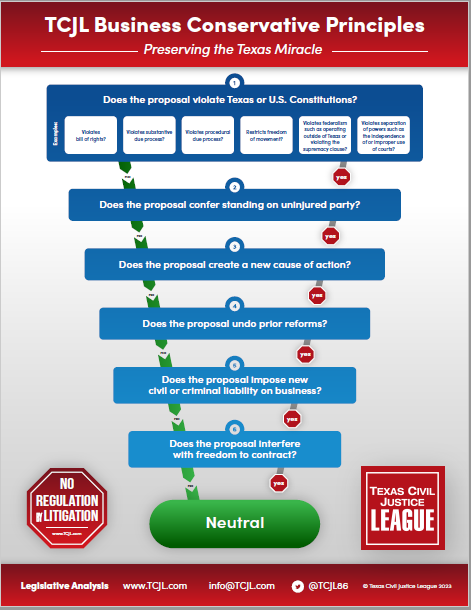 Mark Holloway v. Dallas County Hospital District d/b/a Parkland Health and Hospital System (No. 05-20-01114-CV; issued December 23, 2022) arose from allegations by a former employee of Parkland, who had been outsourced to a contractor that Parkland, discriminated against him for reasons of race by hiring two white engineers in late 2012. About half of the court’s 52-page opinion is devoted to a factual narrative of the case’s sequence of events, but for our purposes the salient facts are these: (1) plaintiff worked in the IT department for Parkland from 1988 to 2003; (2) in 2003 Parkland outsourced the IT work, which eventually ended up in the hands of Xerox; (3) plaintiff was employed Xerox and worked on the Parkland account at the relevant times in the case; (4) Parkland followed its internal hiring procedures and hired two IT engineers, both of whom were white, in 2012 because they held the relevant technical certifications for the jobs; (5) plaintiff did not apply those jobs; (6) plaintiff did not have the relevant technical certification for those jobs; (7) Xerox had placed plaintiff on a performance review that required him to obtain the necessary certification as a prerequisite to his continued work on the Parkland account; (8) plaintiff was removed from the Parkland account when he did not meet the conditions of the performance review and was subsequently terminated; and (9) plaintiff applied for several other jobs at Parkland in 2013 but was not hired.
Mark Holloway v. Dallas County Hospital District d/b/a Parkland Health and Hospital System (No. 05-20-01114-CV; issued December 23, 2022) arose from allegations by a former employee of Parkland, who had been outsourced to a contractor that Parkland, discriminated against him for reasons of race by hiring two white engineers in late 2012. About half of the court’s 52-page opinion is devoted to a factual narrative of the case’s sequence of events, but for our purposes the salient facts are these: (1) plaintiff worked in the IT department for Parkland from 1988 to 2003; (2) in 2003 Parkland outsourced the IT work, which eventually ended up in the hands of Xerox; (3) plaintiff was employed Xerox and worked on the Parkland account at the relevant times in the case; (4) Parkland followed its internal hiring procedures and hired two IT engineers, both of whom were white, in 2012 because they held the relevant technical certifications for the jobs; (5) plaintiff did not apply those jobs; (6) plaintiff did not have the relevant technical certification for those jobs; (7) Xerox had placed plaintiff on a performance review that required him to obtain the necessary certification as a prerequisite to his continued work on the Parkland account; (8) plaintiff was removed from the Parkland account when he did not meet the conditions of the performance review and was subsequently terminated; and (9) plaintiff applied for several other jobs at Parkland in 2013 but was not hired.
In January 2014 plaintiff filed suit against Parkland under Chapter 21, Labor Code, alleging retaliatory termination and a discriminatory failure to hire claim. Parkland filed a plea to the jurisdiction and motions for summary judgment. The case ground on until December 2020, when the trial court granted Parkland’s plea to the jurisdiction and summary judgment motions with prejudice. Holloway appealed.
The court of appeals affirmed. Taking up the plea to the jurisdiction, the court analyzed the jurisdictional requirements to maintain a discrimination lawsuit under Chapter 21. As the court notes, a “plaintiff can establish discrimination under [Chapter 21] in two ways. First, the employee can offer direct evidence of the employer’s discriminatory action or words. Two, because direct evidence of discrimination or retaliation is a ‘rarity’ in employment cases, courts allow claims to proceed with indirect or circumstantial evidence of discrimination or retaliation” (internal citations omitted). Texas law follows federal law on what an employee must show to establish a prima facie case for discrimination necessary to defeat a jurisdictional plea. This showing involves a burden-shifting test in which, once the employee has alleged a discriminatory act, the employer can negate by producing evidence of a legitimate, nondiscriminatory reason for the disputed employment action. The burden then shifts back to the employee to show false pretext. See McDonnell-Douglas Corp. v. Green, 411 U.S. 792, 802-05 (1973).
Parkland argued that the trial court lacked jurisdiction for two reasons: (1) Holloway did not exhaust his administrative appeals (EEOC complaints); and (2) Holloway did not produce any evidence of discrimination necessary to invoke the court’s jurisdiction under Chapter 21. As to Holloway’s discriminatory failure to hire claims for positions other than those filled by the two white engineers, Holloway did not file EEOC claims. He rather invoked the so-called Guptaexception, arguing that he did not have to file administrative claims because his discriminatory failure to hire claims are actionable as retaliation claims arising out of an earlier charge (i.e., the two positions filled by white engineers). The court rejected this argument because it applies only to retaliation claims, not to the discrimination claims made in his prior EEOC complaints, and Holloway pleaded only discriminatory failure to hire claims. Moreover, the Guptaexception does not apply to concurrent discrimination and retaliation charges in any event. The court thus affirmed the trial court’s dismissal for lack of jurisdiction over the discriminatory failure to hire claims other than those made to the EEOC.
With regard to the two claims for which Holloway exhausted his administrative remedies, the court held that Holloway failed to make a prima facie case for discrimination. Although he met the protected class requirement, he neither applied for the jobs nor showed that applying for them would be futile because of a “known and consistently enforced policy of discrimination.” Nothing in the evidence demonstrated that Parkland deviated from its routine hiring procedures in posting the position, accepting applications, routing resumes of qualified applicants to managers for possible interviews, and the interview and offer process. He also lacked the necessary qualifications for the jobs because he never obtained the appropriate technical certification, which constituted a legitimate, nondiscriminatory reason for not routing his to the hiring manager in the first place. Holloway’s evidence also failed to demonstrate that any Parkland employee had a racial animus against Holloway or had a policy of hiring white candidates over others.
Similarly, Holloway had no evidence that Parkland did not hire him in retaliation for the EEOC claims. In order to show that, Holloway would have to produce evidence of a “but-for” causal nexus between the protected conduct (filing an EEOC claims) and the retaliatory action (not hiring him). Additionally, since Parkland did not employ Holloway, Holloway had to assert the “indirect employer theory,” which holds that a non-employer can be liable for a retaliation claim if the non-employer “controlled access to the plaintiff’s employment opportunities and denied or interfered with that access based on unlawful criteria” (citations omitted). He failed to do this. Parkland had nothing to do with managing Xerox employees, only the way Xerox performed its contract with Parkland. Parkland employees who complained to Xerox about the performance of the contract did not target Holloways, and the actions leading up to Holloway’s removal from the Parkland contract were all takend by Xerox, not Parkland. And even after his removal from the Parkland contract, Holloway remained eligible for reassignment within Xerox. Finally, Holloway did not meet the temporal proximity requirement linking the filing of his EEOC claims to his retaliatory termination. Most of the performance issues that led to Holloway’s termination occurred after the protected activity, and the Parkland hiring manager didn’t even know about the EEOC complaints to begin with. Once again, the court of appeals affirmed the trial court’s summary judgment order.
This opinion, authored by Justice Myers and joined by Justice Nowell (the third member of the panel, Justice Osborne, resigned after oral arguments), is instructive as to the current state of Chapter 21 jurisprudence. It also demonstrates that a plaintiff making discrimination claims against a non-employer better have a lot better facts than existed here. It is to the court of appeals’ credit that the opinion thoroughly recites the facts and carefully applies the applicable legal standards, creating a useful roadmap for future cases.
Dallas Court of Appeals Affirms Dismissal of Employment Discrimination Case












